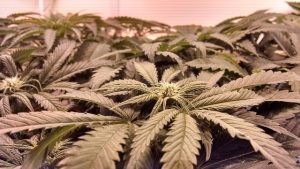Hemp Netting, helping cannabis effectively grow
The Purpose of Hemp Netting
Growing marijuana outdoors is easier since the sun could reach the plants from any point in the sky, at any time over the course of a day. But when growing indoors for those unable to grow outside or lack the space or number of plants, the light would be incapable of reaching all the plants entirely, suffering then the production in the end. Getting the maximum efficiency with the light and with your plants is essential in maximizing your garden’s space and obtaining the most yield from the operation. Cannabis netting is an excellent technique for cultivating the plant to help them grow into strong and healthy plants that could significantly improve yields. Using a marijuana trellis would support their growth and bring them up to their fullest potential through its physical framework and of course, the work of the grower in directing the growth of the plants and where they should go.
The hemp netting could take on different forms, from vertical trellises with wood, bamboo rods, or metal for frames to horizontal trellises held by posts in the four corners built from the walls or poles, or even held through suspension from the ceiling. Either way, the process of the cannabis’ growth would still be similar. The trellis could be made from extruded or molded plastic netting, nylon string, or anything similar as long as it couldn’t cut through the plant tissues. The main goal would be having the branches pulled through the trellis to direct the plant to a certain growth which will then make the branches and the growth separated from each other. With the branches getting the same amount of light, the entire canopy could then absorb more light.

Steps in Setting up the Hemp Netting
-
Once the plants have sprouted, a trellis should then be placed above them. Build a grid of holes, each square being 6″x6″, where buds and branches would be able to pass through.
-
Weave the branches into the trellis netting. The branches should be bent onto the trellis after being grown to be long, tall and thin. Weaving the branches could then be possible after being bent, as required. Afterward, the plant would be able to grow up towards the light. Regularly bend and weave it down, as it grows, into the trellis netting to fill in any gaps.
-
Slip the trellis net down and pull the branches of the plant into each of the individual squares. Make sure to not hurt the plants. The goal is to have one bud per square so eliminate any extra buds that could unnecessarily grow. Sacrificing these would help the others’ growth.
-
Tuck the tops of the plants to even the lower parts with the higher parts of the plant. Within a week, the hemp netting would then turn the garden more even and uniformed while still emphasizing the high-quality buds of the canopy.
-
The development of the plants could be improved using excellent pruning techniques like topping or pinching that could help gain new shoots that are capable of growing strongly. With these results, achieving a bigger amount of the product would be easier while still having the plant’s potential potency.
-
A side canopy could also be built, using the steps above, through vertical trellising. The bud sites on the sides of the plant could be assisted with vertical lighting. Make sure that all buds are reaching their full potential and maximize the use of light to obtain a plant canopy with large and evenly sized buds.
